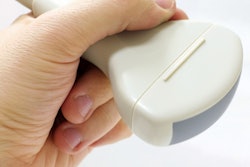Tuesday, November 27 | 3:50 p.m.-4:00 p.m. | SSJ16-06 | Room E353B
Shear-wave elastography (SWE) works better than conventional ultrasound for tracking athletes with patellar tendinopathy, or "jumper's knee," researchers from New York City have found.Dr. Ogonna Nwawka and colleagues from the Hospital for Special Surgery studied any changes over time in the patellar tendons of 11 male college basketball players using shear-wave elastography, comparing the results with those from conventional ultrasound and scores from the Victorian Institute of Sport Assessment, Patellar Tendon (VISA-P) tool.
The players underwent conventional patellar tendon ultrasound and SWE on both knees at particular time points in the preseason and postseason. VISA-P scores were recorded throughout the season. Of the 11 players, six had baseline patellar tendinopathy on preseason ultrasound; over the course of the season, the condition progressed in four of the six.
Nwawka's group found that postseason SWE values showed a strong correlation with changes in VISA-P scores in the dominant and nondominant knees of the players, while conventional ultrasound data did not.
"These results ... [demonstrate] the benefit of this quantitative imaging technique over conventional ultrasound imaging in the characterization of clinically symptomatic patellar tendinopathy," the researchers concluded.




















